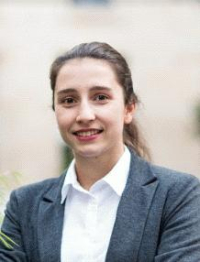14 - QuadWire: an extended 1D model for efficient mechanical simulations of bead-based additive manufacturing processes – optimization use case
Abstract
Bead-based additive manufacturing (BBAM) processes include metal Laser Powder Bed Fusion (LPBF) and Directed energy deposition (DED). Using a moving focused heat source to melt feed-stock material simultaneously deposited by a moving nozzle, both single and multi-track scanning strategies can be performed to build multilayer thin-walled structures and massive parts alike. Process parameters have a significant influence on microstructure and residual stresses, which mainly depend on temperature history. However, although fast numerical approaches have been developed for thermal analysis and phase transitions [1,2], efficient computation of residual stresses remains challenging. Indeed, 3D/2D finite elements method (FEM) involves meshing along the layer thickness and/or height, which implies a very fine discretization along the print direction as the elements should not be too elongated to avoid conditioning issues [3]. To avoid such a fine mesh density, an enriched 1D model immersed in the 3D space named QuadWire is proposed. Reducing dimension (e.g., from 3D to 2D/1D) and increasing the number of degrees of freedom (DOF) enables significantly shorter computation time while still capturing complex stress fields in the part and ensuring good accuracy [4]. In the proposed model, layer thickness and layer height are internal parameters independent of mesh size, which in turn can be coarser along print direction. At each material point, 4 displacement vectors are introduced leading to 12 DOFs. Thus, kinematic conditions between a bead and its 4 neighbors (i.e., right, left, top and bottom) may be simply written. The model derivation through the virtual work principle will be broached, and a linear thermo-elastic behavior will be derived. Because the FE implementation of this extended 1D model is much faster than its Cauchy equivalent, large scale single and multi-track scanning strategies can be handled efficiently, enabling numerical optimization of process parameters [5] to control residual stress. An optimization problem will be derived for a thin-wall structure based on the new QuadWire mechanical model weakly coupled to a fast thermal model [1]. References [1] D. Weisz-Patrault; Additive Manufacturing, 2020, 31, 100990. [2] A. Edwards, D. Weisz-Patrault, and E. Charkaluk. Additive Manufacturing 2023, 61, 103300. [3] D. Weisz-Patrault, P. Margerit, and A. Constantinescu, Additive Manufacturing, 2022, 56, 102903. [4] J. F. Caron, A. Diaz Diaz, R. P. Carreira, A. Chabot, and A. Ehrlacher, Composites Science and Technology, 2006, 66, 755-765. [5] M. Boissier, G. Allaire, and C. Tournier, Structural and Multidisciplinary Optimization, 2020, 61, 2437‑2466
Speaker

Laurane Preumont
Discover speaker profileLMS, CNRS, École Polytechnique, Institut Polytechnique de Paris, Palaiseau, France
See LinkedIn profileConference
14 - QuadWire: an extended 1D model for efficient mechanical simulations of bead-based additive manufacturing processes – optimization use case
Date/Time
20/03/2024
5:40 pm -6:00 pm
Location
Room 8

